What to Do If Your Intimate Photos Were Leaked Online — A Comprehensive Guide with Helpful Tools and Resources
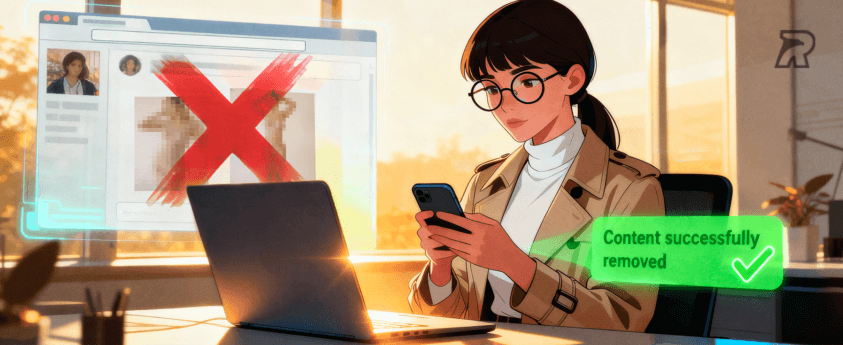
If you are a victim of leaked content, here are immediate actions to undertake and a checklist with all steps.
The most common misconception about image-based sexual abuse, also known as revenge porn, is that it only affects careless or irresponsible people. In reality, victims can come from any background.
What struck me while researching the topic is that in most cases, the perpetrator is a former or current partner. One particularly shocking case I came across involved a man who secretly filmed his boyfriend and then sold the intimate videos to a porn website.
Over the past 15 years, cases have surged: in 2016, 1 in 25 Americans suffered from nonconsensual image sharing, rising to 1 in 12 just three years later.
In 2025, the USA, along with Mexico and Australia, leads in reported cases of non-consensual distribution of intimate images and videos, according to a global study of 16,000 participants across 10 countries.
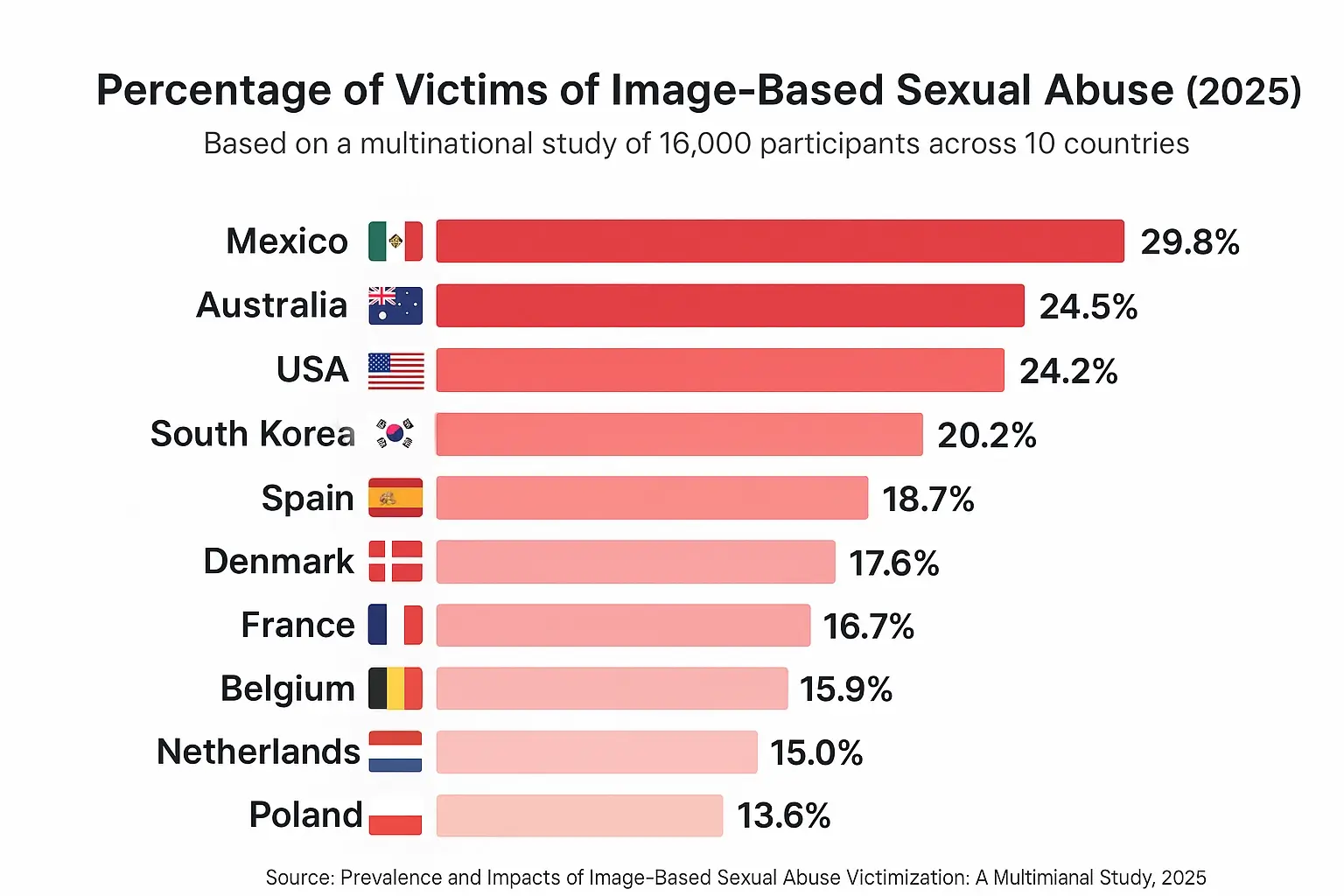
Whether someone shared your private photos or threatened to do so, it’s possible to remove them from the internet and take legal action against the perpetrator. In this article, I’ll show you how to do both.
To sum up:
- Anyone can become a victim of nonconsensual image sharing
- Image-based sexual abuse has risen dramatically recently
- The USA leads among countries in the prevalence of this crime
Different types of image-based sexual abuse
Image-based sexual abuse takes different forms depending on the perpetrator’s actions. Here are the most common:
Revenge porn
is when someone you know, a current or former partner, shares your private photos without your consent. It often happens after a breakup, and the goal is revenge, humiliation, and mental harm rather than money. The most notorious case involved TV personality Blac Chyna, whose explicit photos were shared by her then-boyfriend Rob Kardashian, amid accusations of cheating.
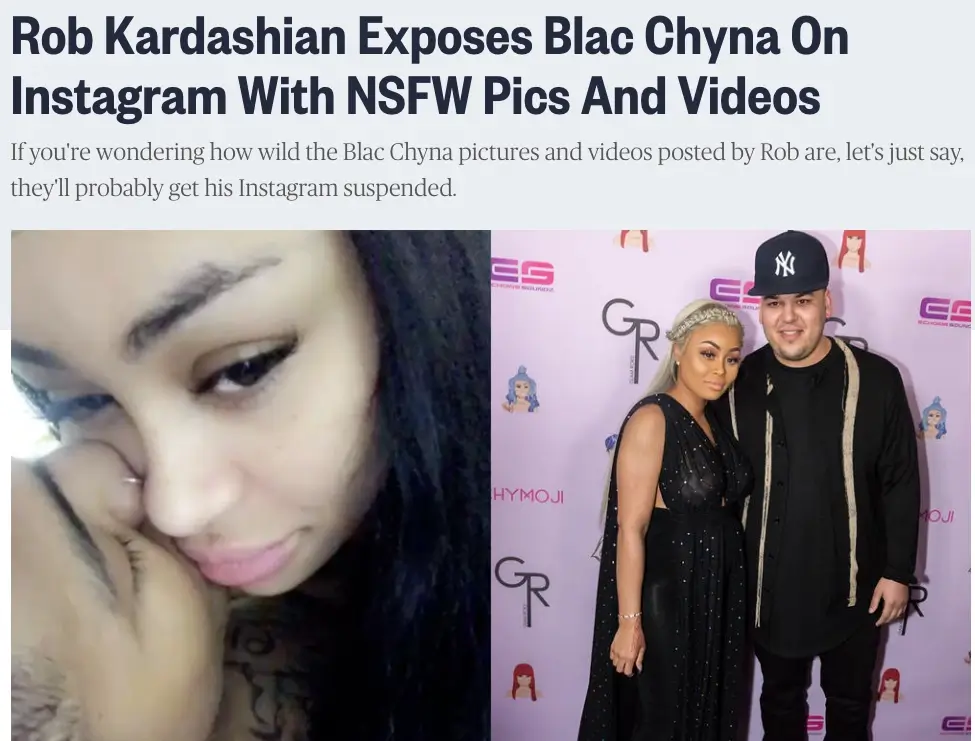
Sextortion
is when someone blackmails you with your intimate photos to gain more images, sexual favors, money, etc. They may also threaten to harm you or your loved ones. The perpetrator can be an ex-partner, a stranger who coerced you to send your “nudes”, or someone who stole them from your devices.
In 2025, Florida Miss United States Lindsey Langston accused her ex-partner, Congressman Cory Mills, of threatening to release her intimate images and harm future partners.
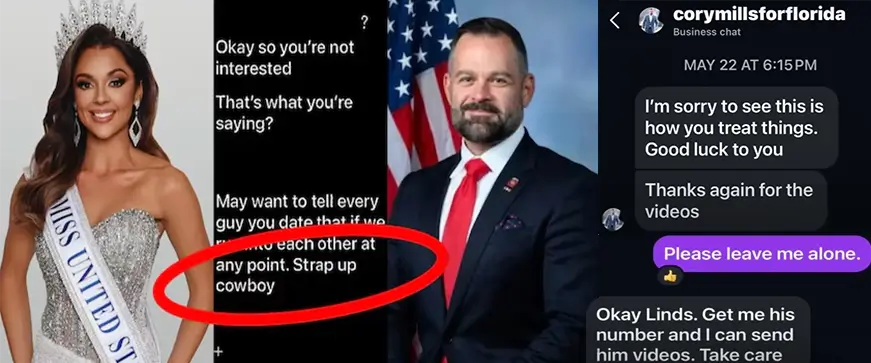
Deepfake porn
involves superimposing someone’s face onto pornographic videos without their consent, often using AI tools. In 2024, British Channel 4 analyzed the five most visited deepfake sites and found nearly 4,000 celebrities’ faces used without permission. Another study shows 84% of social media influencers have been victims of deepfake pornography.
Hidden Camera
is when someone secretly records intimate moments using spy cameras, hacked webcams, or hidden recording devices, then shares the footage without the victim’s knowledge or consent. In 2024, CNN’s investigation revealed that Airbnb generated 35,000 customer support tickets related to surveillance devices over the past decade, with hidden cameras found in bedrooms and bathrooms of rentals across the United States and Europe.
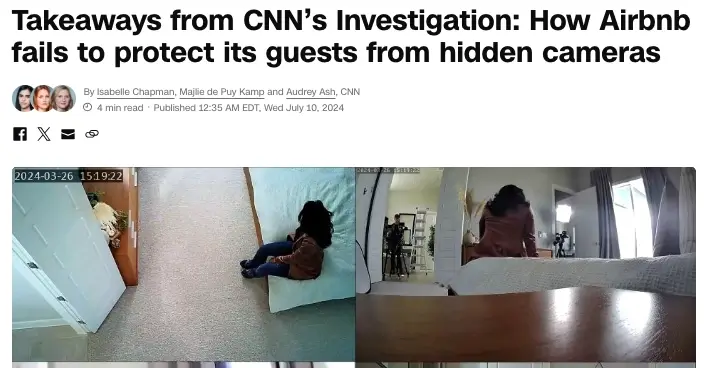
The global nature of this violation makes it one of the most pervasive forms of image-based sexual abuse.
To sum up
- Revenge porn, sextortion, and deepfake porn are common types of image-based abuse.
- In most cases, the perpetrator is a partner seeking revenge.
What are the immediate actions to take if someone leaks your private photos or videos?
✔️Try not to panic
Staying calm is essential for taking the first steps to protect yourself and minimize damage.
✔️Take initial digital safety measures
Use stopncii.org to prevent the appearance of images or videos on the most common porn websites and the majority of social media platforms.
✔️Ask for help
Reach out to a trusted family member or friend for assistance with taking down images and emotional support. In the US, contact trained professionals at the Cyber Civil Rights Initiative via their helpline at 1-844-878-2274 or through their website messenger.
If you are under 18 or were when the abuse happened, contact the National Center for Missing and Exploited Children.
✔️Collect the evidence of abuse and find where else the materials were published
Gather evidence of the abuse carefully, so it can be used by police or in court — even if you’re not ready to take action now. You may change your mind later.
✔️Request image removal from Google, websites, or social media platforms
Most platforms and websites allow users to report inappropriate content.
Should I talk to a perpetrator?
If there are threats, blackmail, or the person is anonymous, do not engage with them and go to the police.
Even if the perpetrator is someone you know, it’s not a good idea to deal with them alone. According to experts, it often only escalates the conflict and causes more harm. The safer and more effective approach is to seek professional, legal, or organizational support early on, which usually leads to quicker resolution and less emotional strain.
To sum up
- Don’t act alone, seek help. It can be your close one or professionals: policy, helpline and social services.
- Follow the guide above to protect your reputation and prevent further leakage.
- Don’t delete communications or private photos/videos from your device.
How to collect the evidence of image-based sexual abuse
It’s essential to document the abuse properly, so it can be used as evidence for reporting to websites, platforms, police and or in court.
- Save images, videos, and all communication with the perpetrator, as well as messages from strangers after publication. Store them on a hard drive or flash drive.
- Take full-screen screenshots showing the URL, image, and date/time. Use Wayback Machine to archive webpages.
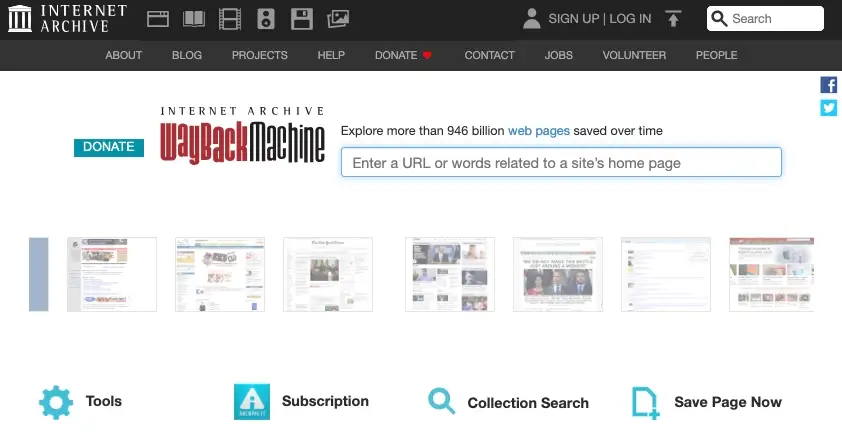
- Stay organized by using an evidence chart. Download the template.
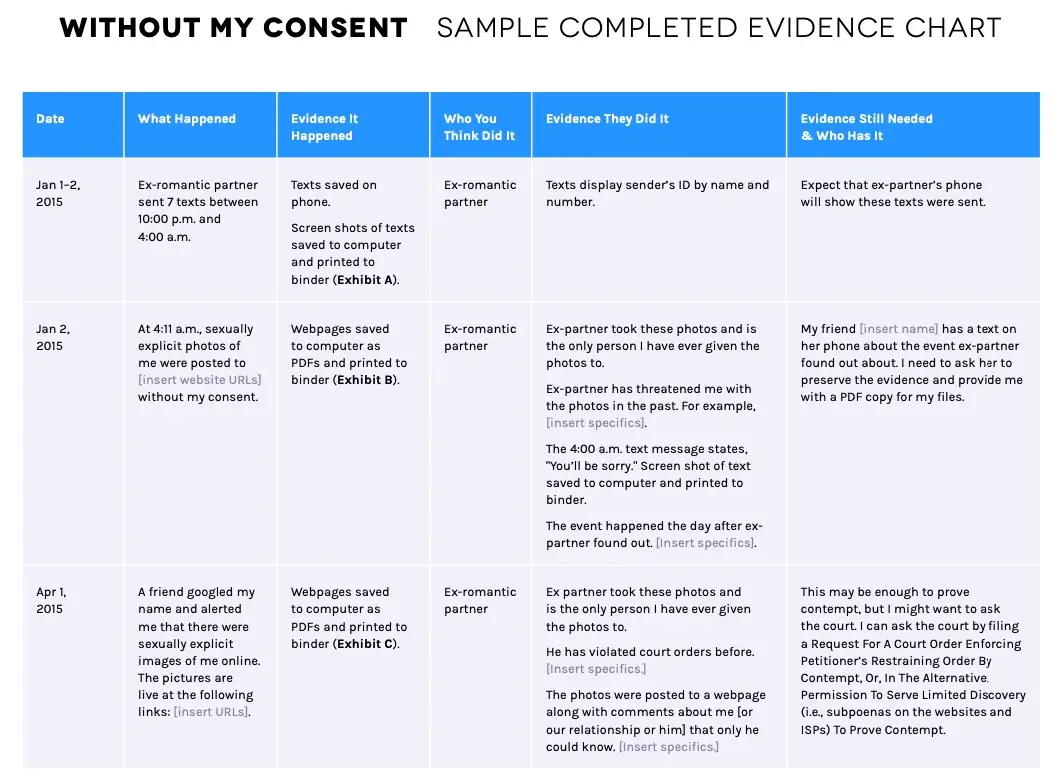
Request that websites or platforms preserve data about the perpetrator (IP address, date/time). This information is usually kept for 1-2 months, so act quickly. A lawyer can send a hold letter to preserve the evidence.
To sum up
- Document all the relevant evidence.
- Print them.
- Store digital copies on a flash drive.
- If pursuing legal action, request that websites hold data within 2 months of the abuse.
How to research your nude photos or videos online
Whether you know which websites the images appeared on or not, it’s worth checking. Here’s how to do it:
Search by your name
on Google, Bing, and Yahoo, and see if any offending materials appear
Conduct a reverse image search
Go to Google Images and click ‘search by image’, upload the image, and see if there are any results. It’s safe and won’t upload your images to the internet.
Use advanced search
For instance, you can search for a specific website by googling: “site:” URL of the website”. Check typical adult and dating websites. You can also search for exact phrases, for instance, your name, in quotation marks.
If you know the content is in a specific file type, you can start your search with “filetype:” and the file extension, such as “filetype:jpg” or “filetype:mov”.
Use online monitoring tools
Set up a Google Alert that includes your name or other identifying information.
Various facial and image recognition services like TinEye help find disturbing images and create real-time alerts.
How to remove your intimate images or videos from the internet
While you can remove images or videos from Google or other search results, this doesn’t delete them from the original websites. To do that, you need to contact the website owner or a provider.
Most search engines provide a form requesting your name, country, the link to the content, and screenshots of the material.
Here are the forms:
If you have the videos that were posted and used stopncii.org, they won’t appear in search results on Bing.
Don’t forget to document the photos and videos before requesting their removal from websites and platforms.
How to remove revenge porn from Facebook, Instagram, and other social media
You can have your private photos or videos removed from social media platforms using their reporting tools.
In most cases, you need to:
- Go to the image or video
- Click three dots above
- Tap “Report”
- Pick “Nudity”, “Sexual activity”, or “Intellectual property”
- Then choose either “Threatening to share or sharing nude images” or “Nudity or sexual activity”.
This could also help to deactivate or suspend the offender’s account. If the content isn’t removed after your report, contact the platform’s help center:
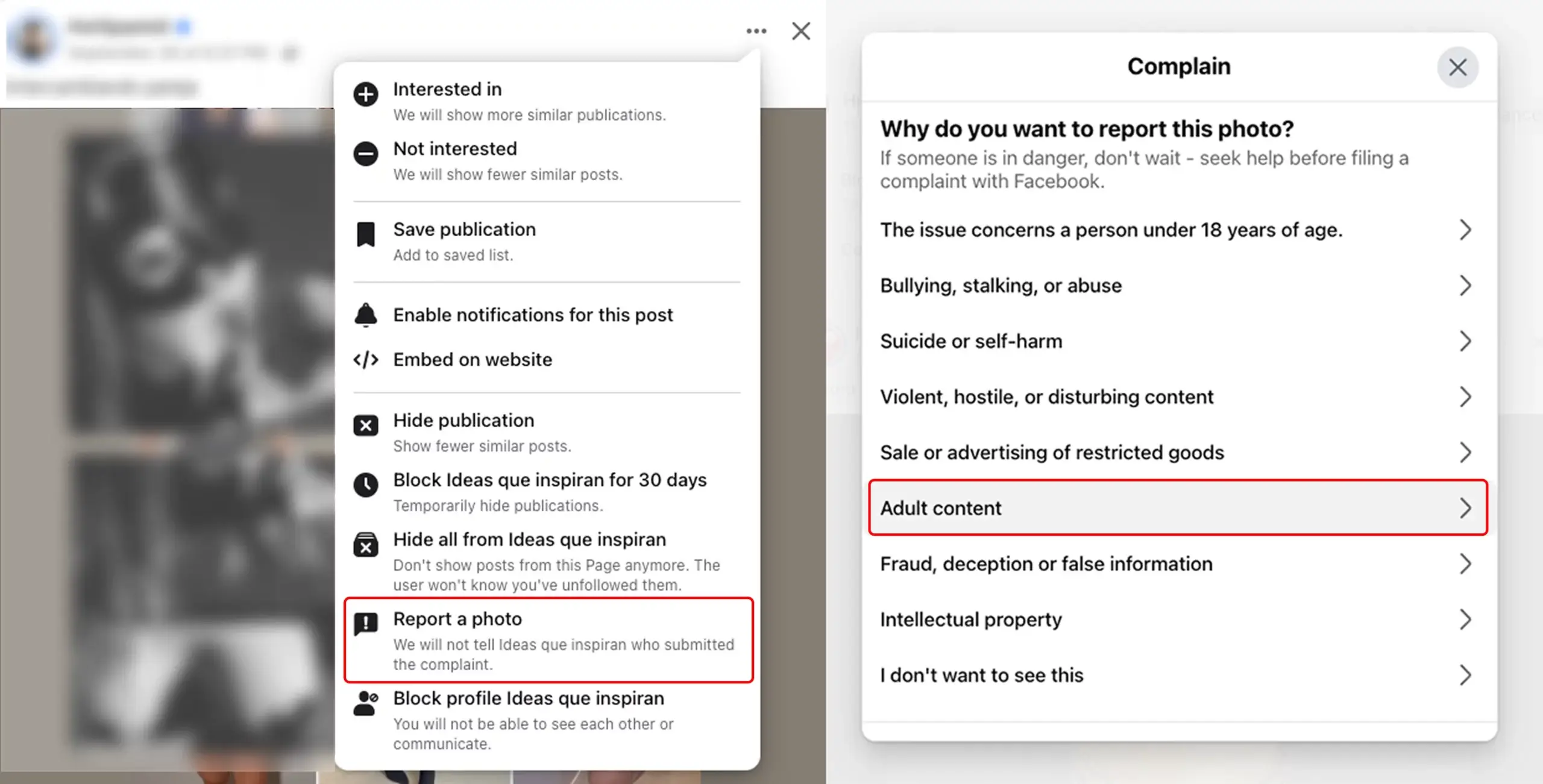
How to remove your private images from websites
Most adult websites, like Pornhub, have forms for content removal requests. Others may not, especially those that are created by the perpetrator. So you’ll need to contact the website owner directly. If there’s no information about them on the website, use Whois to find it.
If the website owner ignores your requests, contact the hosting provider with legally supported documents.
To sum up
- Use special forms to request removal from Google and other search engines.
- Use reporting tools to take down content from social media.
- If a website has no reporting tools, identify its owner and submit your request directly.
What is a DMCA takedown notice, and how to use it in image-based sexual abuse cases?
If you took the nude photos or videos yourself, you hold the copyright and can request their removal with a DMCA takedown notice. This is what you can also do if your content, for instance, from your OnlyFans, Patreon or Fansly page, is reposted without consent.
The DMCA (Digital Millennium Copyright Act) prohibits anyone from using or sharing your content without permission. You can also register your rights with the U.S. Copyright Office. If a website ignores your request, a DMCA notice can help.
How to send a DMCA notice
- Identify the correct recipient using this tool.
- Look for “Registrar” or “Hosting Provider”.
- Go to their website and find a designated DMCA Agent. Usually, you can find it in sections like “Legal,” “Copyright,” or “DMCA Policy.”
- See the designated DMCA Agent’s contacts; this is where you’ll send your takedown notice.
Another way to identify a DMCA Designated Agent is to search on the government website.
For instance, I looked up the info about one of the porn websites that doesn’t have a form for content removal. Here’s what I’ve got.
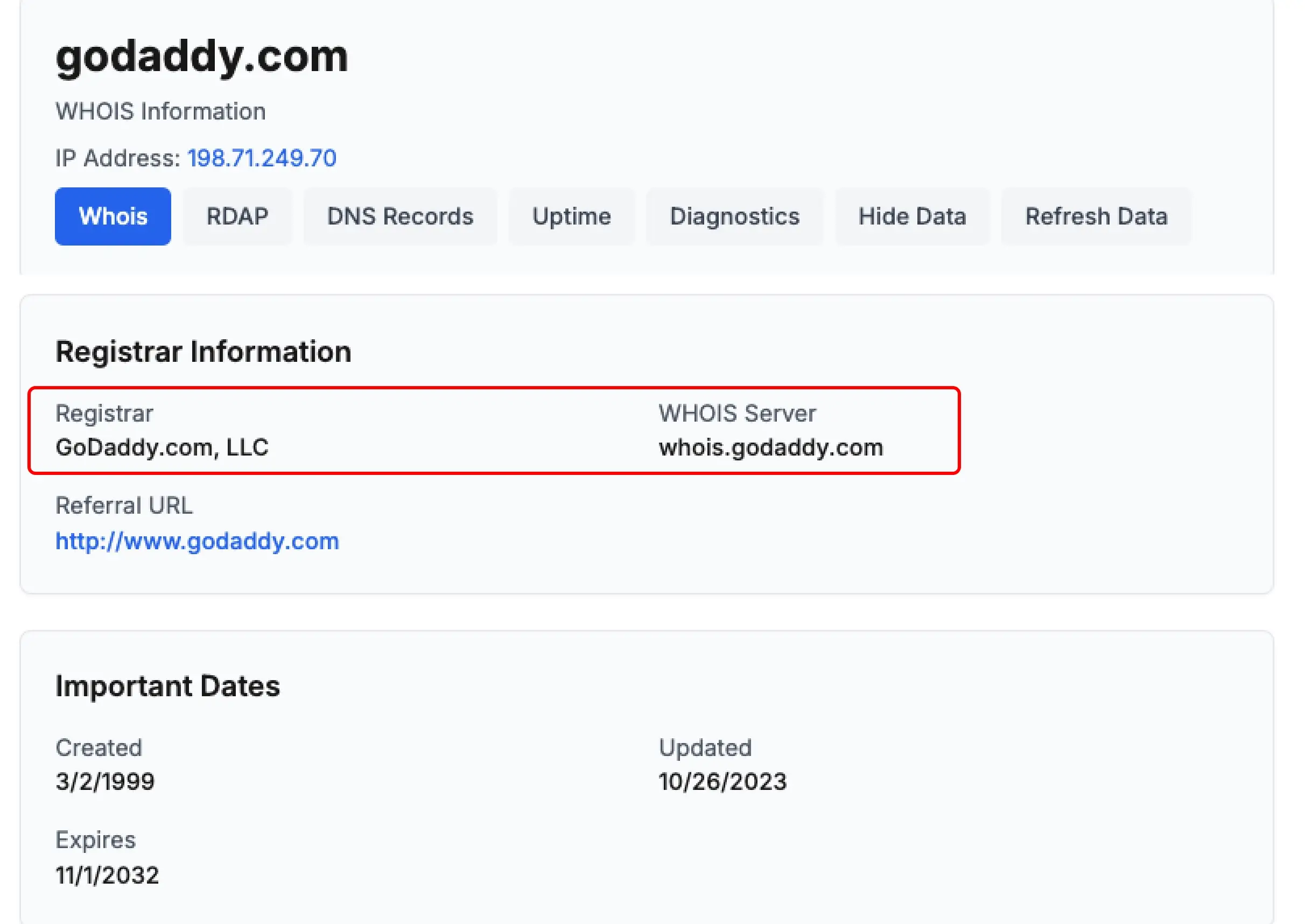
So, the hosting company is GoDaddy. I couldn’t find DMCA Agent on their legal page, but there was a form for reporting an abuse.
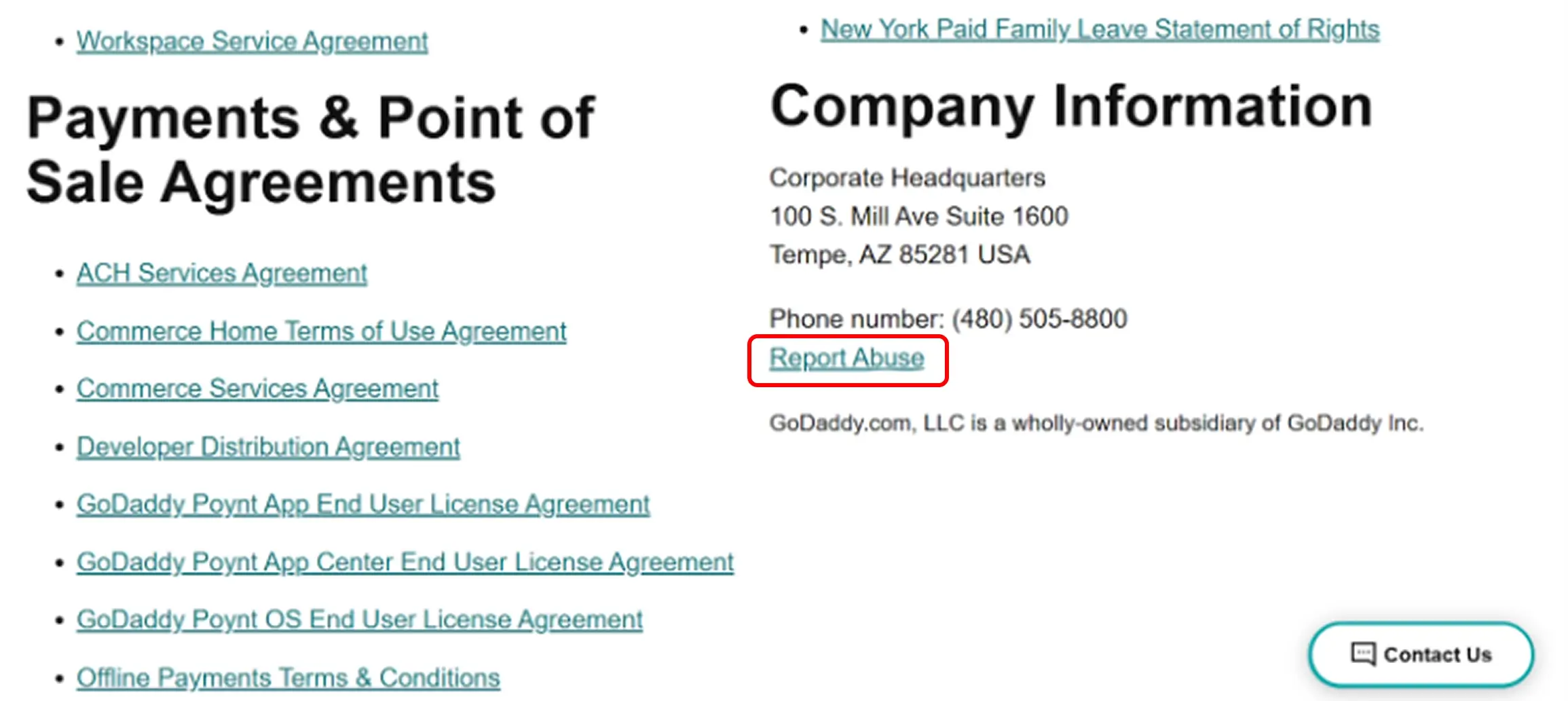
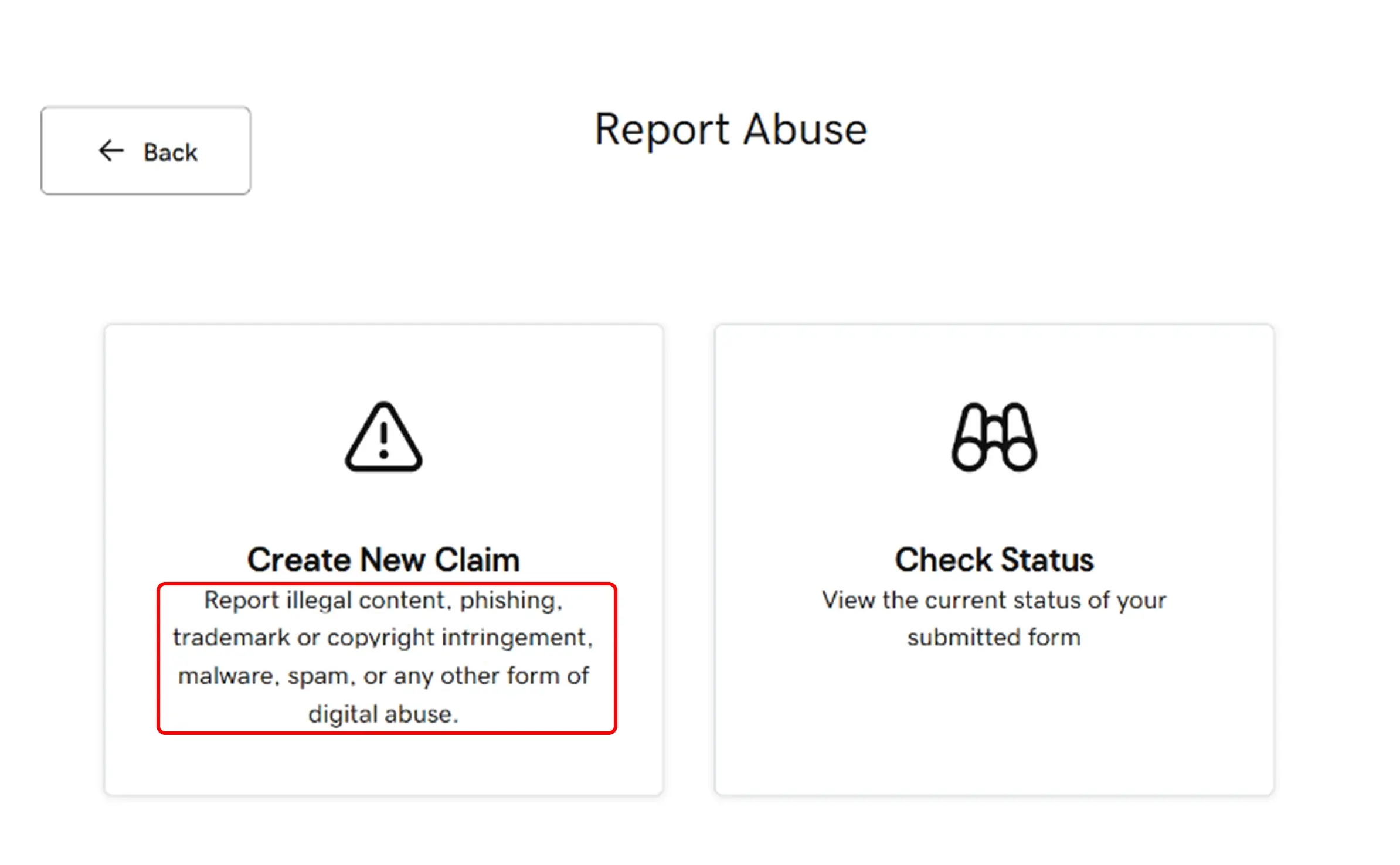
The DMCA notice must include:
- a brief description of the explicit content
- a statement that it was shared without your consent
- your full name and contact information
- your physical or electronic signature
To ensure validity, consider hiring a DMCA lawyer or a reputation agency.
Pros:
- A quick and relatively easy way to remove content
- Templates are available on the Internet for guidance
Cons:
- Only works if you took the photos or videos
- You may need to hire a lawyer or a reputation agency
Taking action against image-based sexual abuse perpetrators
In the US, the federal TAKE IT DOWN Act prohibits sharing nonconsensual intimate images and AI-generated fakes. Penalties include fines and 2-3 years in jail. Most states also have their own laws against image-based sexual abuse.
Use interactive maps to check laws in your state:
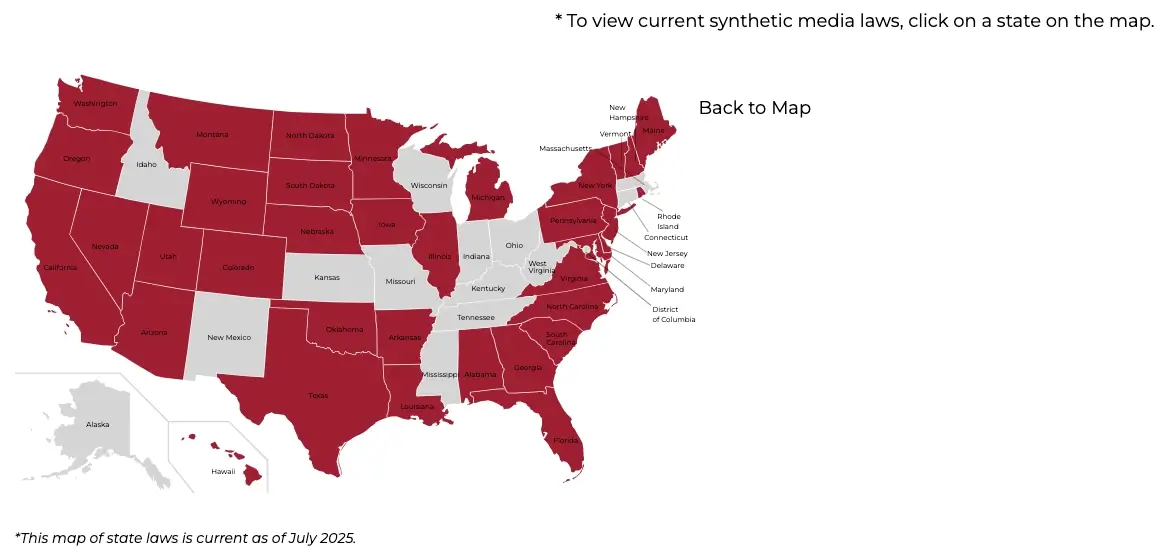
You can file criminal, civil, or both types of lawsuits:
Criminal:
Report to
- local police
- the National Center for Missing and Exploited Children if you were a minor during the abuse
- The Internet Crime Complaint Center for out-of-state or international perpetrators.
Civil:
Seek compensation by filing a lawsuit with a lawyer. The US helpline lists specialized lawyers, some of whom offer free consultations or pro bono services.
Using a pseudonym:
You can file a “Doe plaintiff” lawsuit to remain anonymous. Procedures vary by state. Consult a lawyer or see here.
Pros:
- You are now safe and under the protection of the government.
- Possible compensation for suffering and losses
Cons:
- Can take time
- May have to face the perpetrator in court
- Lawyer fees in civil cases
How a reputation agency can help with revenge porn removal
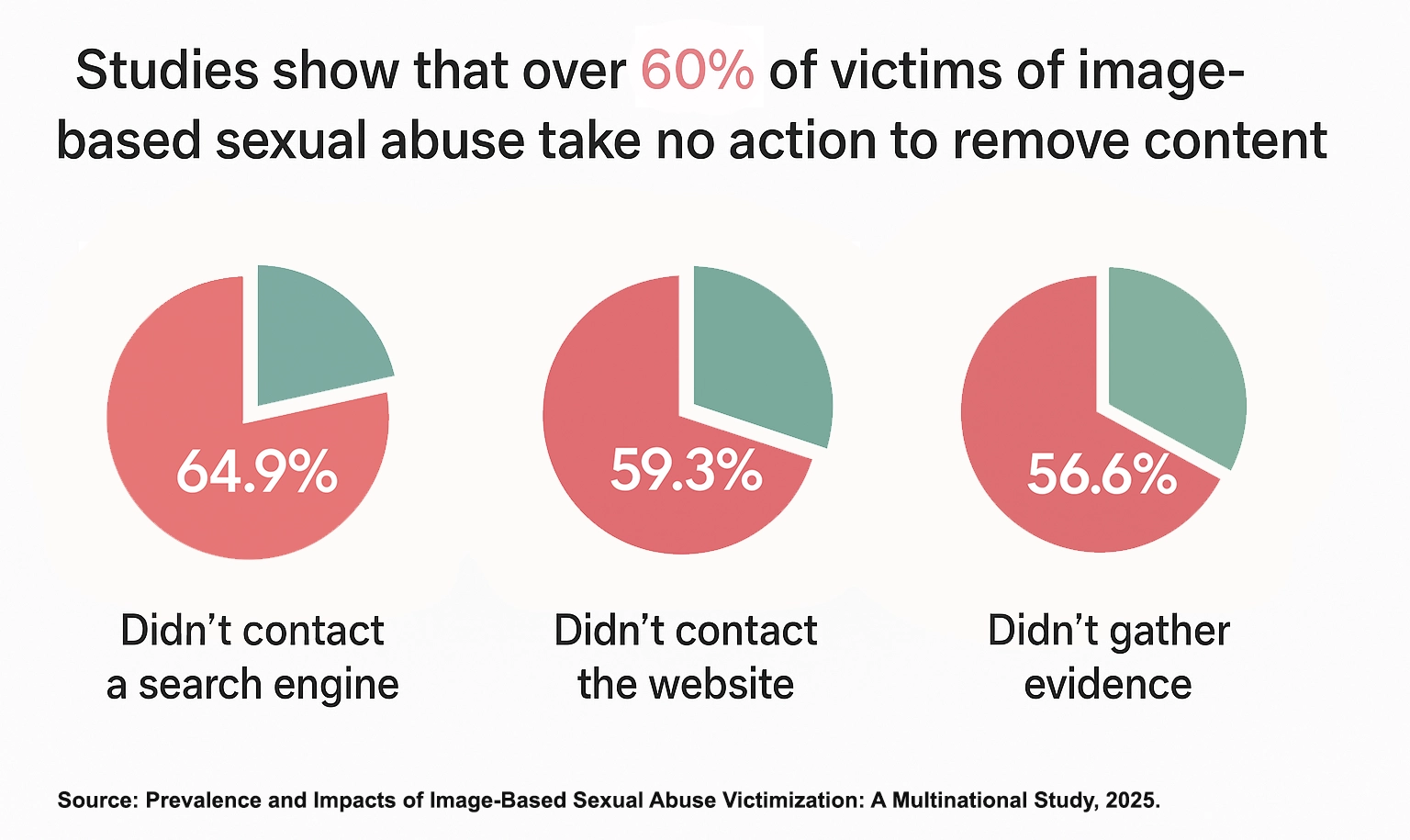
Removing sensitive content online can be a painful and overwhelming experience, especially if you have no one to confide in. Studies show that over 60% of victims of image-based sexual abuse take no action to remove content.
In the USA, free help with revenge porn removal is available only for underage victims. If you’re under 18, request support here.
Adult victims can get free assistance from advocates or social workers, who help gather evidence, accompany them to the police, and provide legal guidance. However, the process of copying content, sending removal requests, and following up with websites still falls on the victim. For some people, it can be too much.
This is where we step in. With over 10 years of experience in content removal, we handle the process for you, removing unwanted material quickly and efficiently.
Reputation America can help you:
- remove content from various websites and social media platforms
- contact the platforms or the perpetrator and negotiate with no risk of escalation
- write and send a DMCA takedown notice
- check and monitor other possible leaks
Need help with your DMCA takedown notice? Contact us
How can you be sure that your photos or videos are entirely removed from the internet?
Check it with Google Advanced and reverse image search. Set up a Google Alert. If the unwanted content still appears, request its removal under copyright law.

There are infinite websites with leaked content that are updated daily. Anyone with the leaked content on their PC can re-upload it multiple times on various platforms. The good news is that major cloud service providers are aware that a copyright violation will lead to the permanent shutdown of their revenue-generating websites. Plus, we can remove the unwanted content as many times as needed.
 Liza DomrachovaRemoval Expert
Liza DomrachovaRemoval Expert
What to remember about image-based sexual abuse
“If you’re a victim of revenge porn, remember: it’s not your fault, and you’re not alone. Ask for help. You can remove the images, regain control of your life, and hold the perpetrator accountable.”
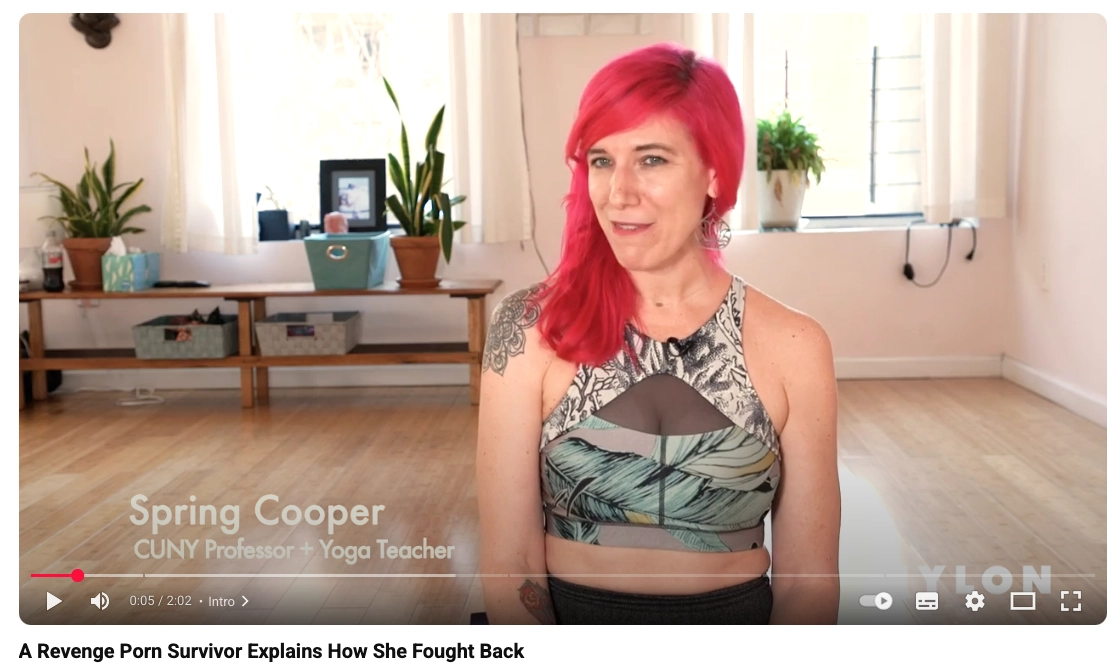
A checklist of immediate steps after an image-based abuse
! If a perpetrator threatens to harm you or other people physically, call the police straight away.
- Try to calm down.
- Talk to a caring friend or a family member.
- If you have the content, use stopncii.org to prevent its publication on the major platforms.
- Contact a helpline or social worker and get guidance on the best course of action in your situation.
- Document everything relevant to the abuse.
- Request image removal or hire a reputation agency to do it on your behalf.
- Contact law enforcement or a lawyer to take action against the perpetrator.
- Find a therapist to reduce the toll on mental health.
Download this checklist as a PDF
FAQ
Save evidence with URL, date, and time, then report to the platforms. Contact the revenge porn helpline for advice tailored to your case.
Be cautious who to send them to. Use strong passwords and MFA. Consider registering copyright with the U.S. Copyright Office. It will help to remove stolen content from other websites and platforms.
Yes, we can help remove private content with a high success rate. We have proven strategies to do so. Additionally, when several years have passed, it’s likely that those who were sharing the content are no longer actively distributing it, which further improves the chances of a successful takedown.
As the creator, you own copyright. If someone uses your content without your permission, you can send a DCMA takedown notice for the removal of stolen photos or videos.
List of sources
- Cyber Civil Rights
- Prevalence and Impacts of Image-Based Sexual Abuse Victimization: A Multinational Study
- Without my consent
- Reuters. New US law emerges to fight “revenge porn” amid surge in reported cases
- More men than women are now reporting image-based abuse. I’m one of them
- UK revenge porn helpline
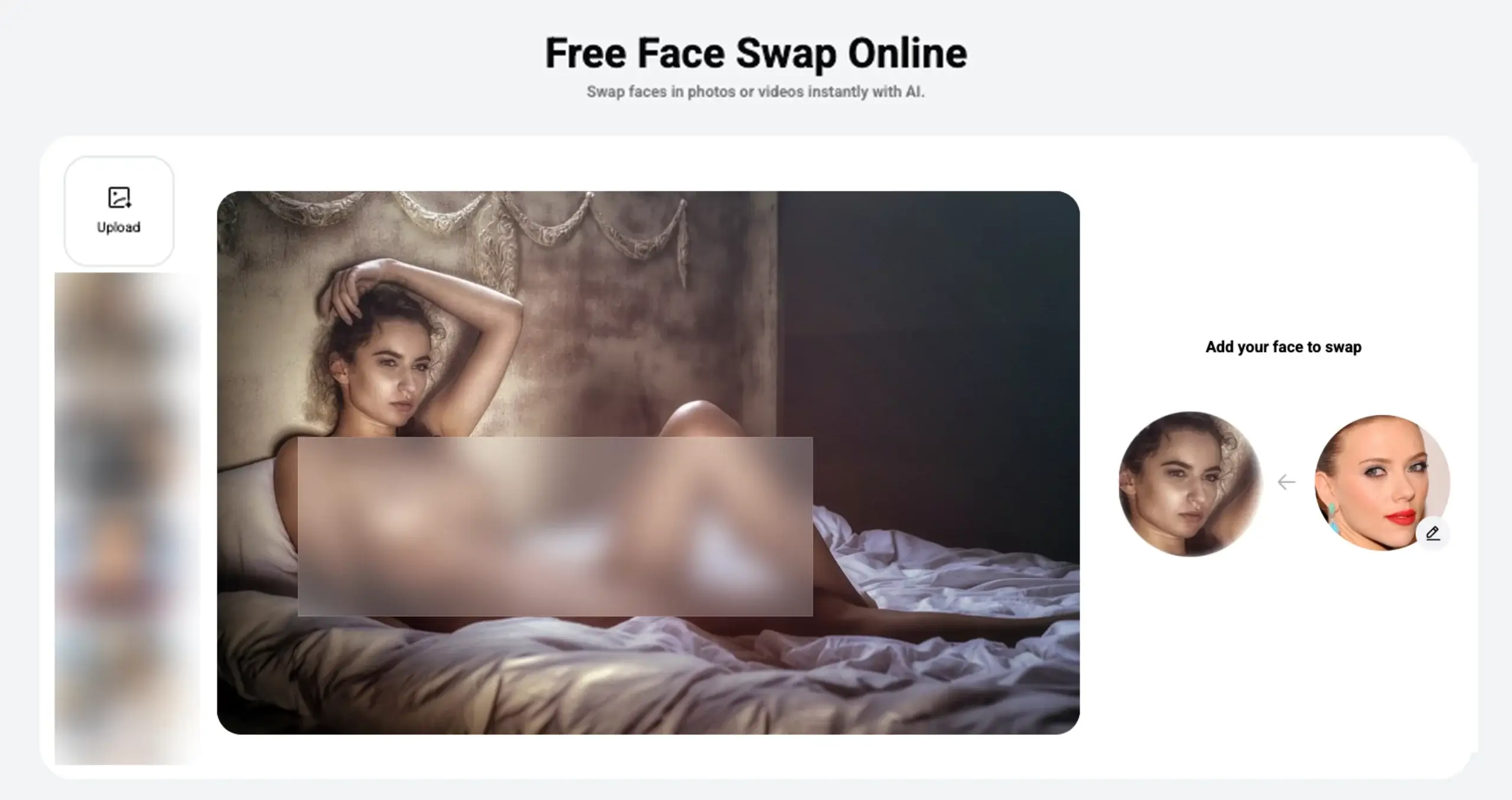





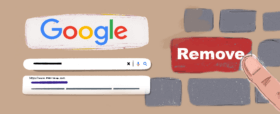


This article does not have any comments. Be first to leave one.